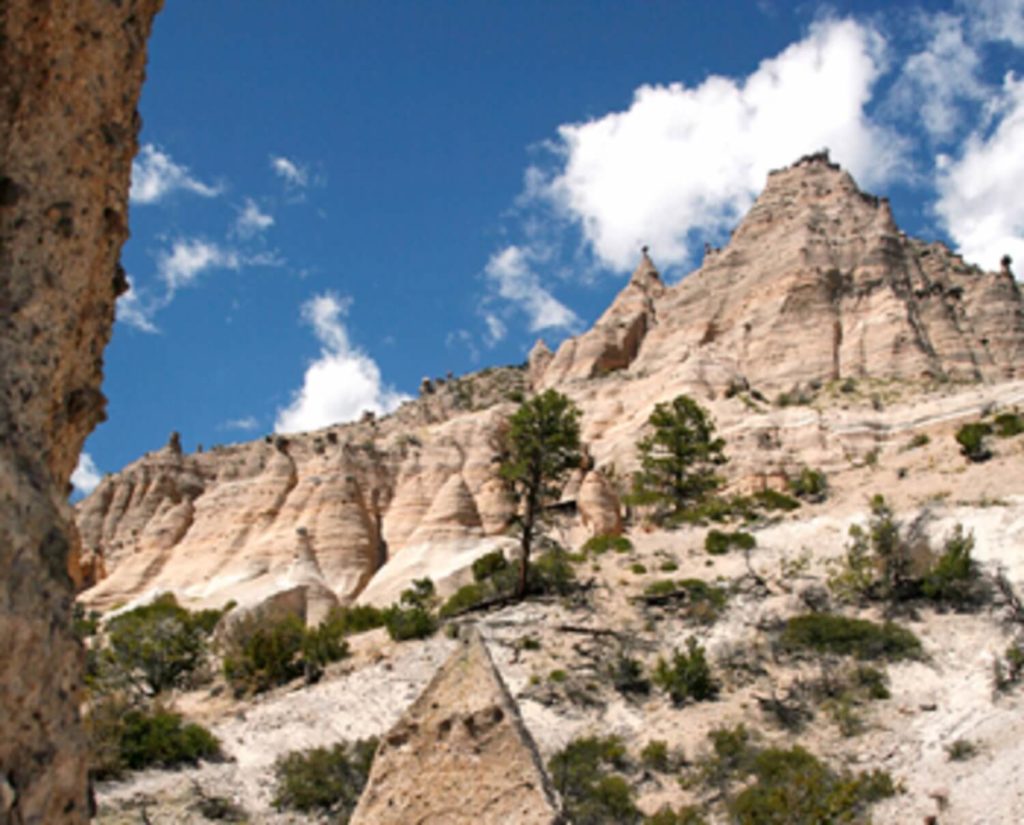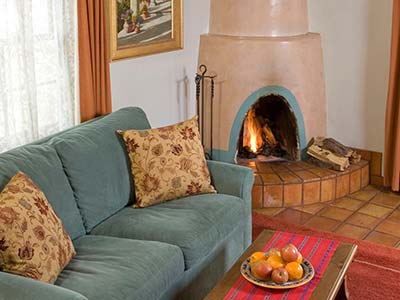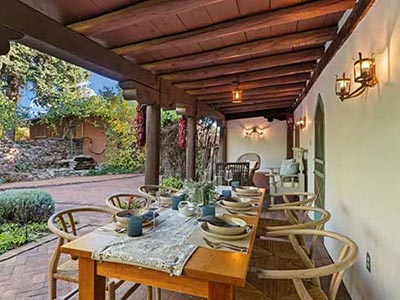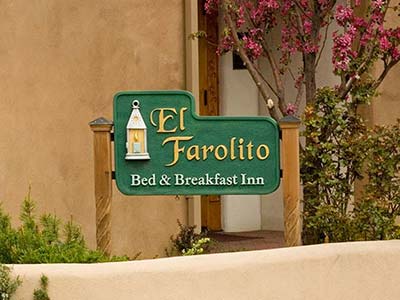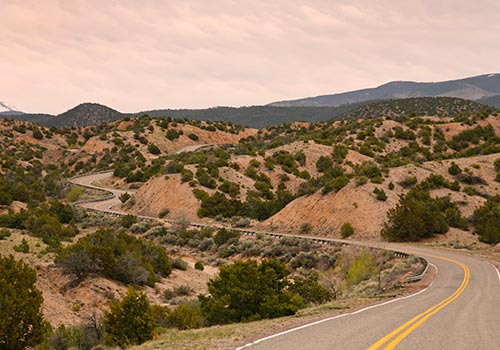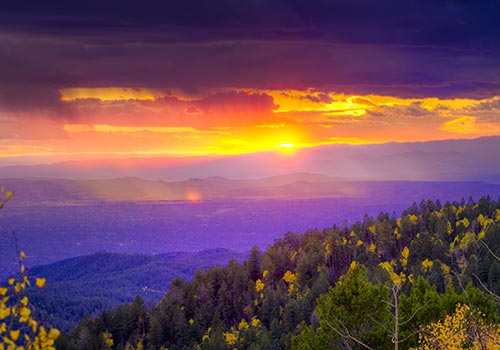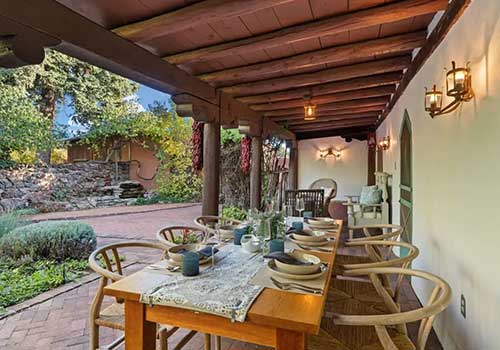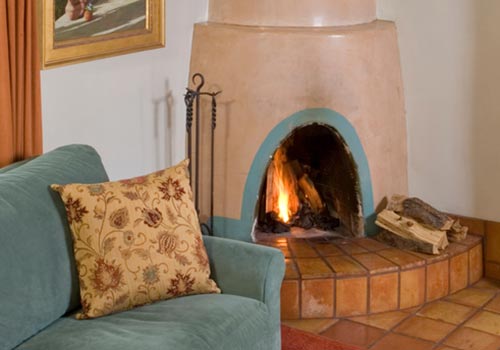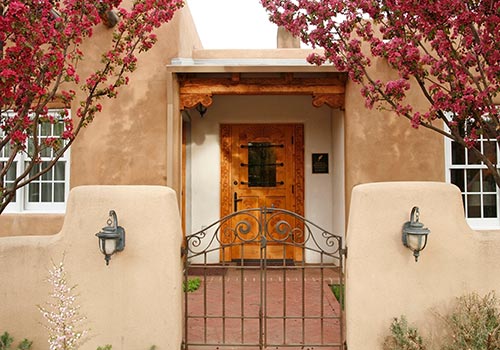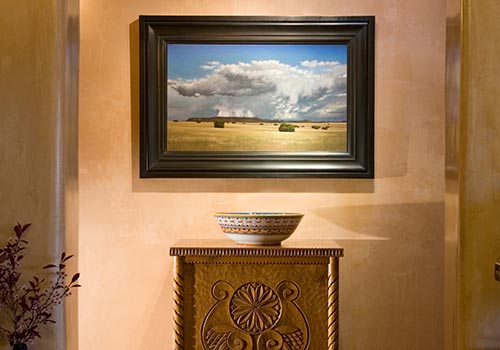This scenic trip winds through ruins of an ancient civilization, a high-tech research center (birthplace of the atomic bomb), traditional Pueblos, and the collapsed center of a long-dormant volcano. Follow US 84/285 north from Santa Fe. Then turn west on SR 502 to Los Alamos. Connect with SR 4 to Bandelier National Monument. Continue on NM 4 past the Valle Grande, through the Jemez Mountains and the town of Jemez Springs. Connect with US 550 at San Ysidro to Bernalillo and then return to Santa Fe via I-25 (about 160 miles round-trip).
San Ildefonso Pueblo: Located 23 miles north of Santa Fe, the contemporary San Ildefonso Pueblo has a flourishing art community. With an average of 20,000 visitors yearly, this is one of the most visited northern pueblos. Famous for the matte-finish black-on-black pottery originated by potter Maria Martinez in the 1920’s, the Pueblo has several on-site craft shops and artisan’s homes open to the public for shopping. The pueblo offers spectacular views of Black Mesa, a sacred site. For pueblo information, please call 505-455 3549
Bradbury Science Museum: This museum is operated by Los Alamos National Labs and displays scientific and historical information in three galleries – Manhattan Project history, national defense, and varied basic and applied research. Most interesting are videos that tell the story of life at Los Alamos before and during the Manhattan Project. There are photos, documents, and objects illustrating life during these intense years when an international team of scientists raced to build an atomic bomb. Call for hours and exhibition information: 505-667-4444.
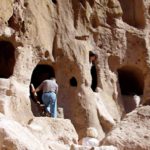 Bandelier National Monument: The ancestors of modern Pueblo people built thriving communities about 600 years ago in the area known as Bandelier. Several thousand ancestral pueblo dwellings are found among the pink mesas and sheer-walled canyons. The best-known archeological sites, in Frijoles Canyon near the Visitor Center, have easy access to visitors. One can explore the area via a short, self-guided tour of the ruins or choose more in-depth hiking into the backcountry wilderness. More than 50 miles of maintained trails lead to unexcavated ruins and wildlife habitat throughout the monument. Call the visitor center at 505-672-3861 x 517 or hear recorded information at 505-672-0343.
Bandelier National Monument: The ancestors of modern Pueblo people built thriving communities about 600 years ago in the area known as Bandelier. Several thousand ancestral pueblo dwellings are found among the pink mesas and sheer-walled canyons. The best-known archeological sites, in Frijoles Canyon near the Visitor Center, have easy access to visitors. One can explore the area via a short, self-guided tour of the ruins or choose more in-depth hiking into the backcountry wilderness. More than 50 miles of maintained trails lead to unexcavated ruins and wildlife habitat throughout the monument. Call the visitor center at 505-672-3861 x 517 or hear recorded information at 505-672-0343.
Tsankawi: Tsankawi, a detached part of Bandelier National Monument, is undeveloped and unexcavated. A 1.5 mile trail follows centuries-old paths through the area where the ancestral Pueblo people lived. Cave dwellings, petroglyphs, and the site of Tsankawi village can be seen from the paths. Tsankawi can be found just before the entrance of Bandelier National Monument off NM 4.
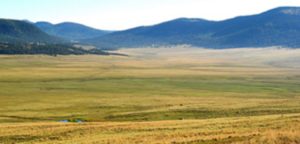 Valle Grande: This collapsed volcanic caldera is one of the largest in the world. A vast meadow approximately 3 miles in diameter and a 15-mile diameter ring of mountains are the only visible remains of a massive volcanic eruption. The 89,000-acre Valles Caldera National Preserve in the Jemez Mountains is located 15 miles west of Los Alamos on NM 4. The preserve is open to the public, but has managed to keep the numbers of visitors small, so you’ll feel like you have the place to yourself. Get out and experience a profound sense of solitude that will leave you refreshed and relaxed. See wildlife, beautiful vistas, and learn about the preserve’s rich history and geology. Schedule your visit by going to www.vallescaldera.gov.
Valle Grande: This collapsed volcanic caldera is one of the largest in the world. A vast meadow approximately 3 miles in diameter and a 15-mile diameter ring of mountains are the only visible remains of a massive volcanic eruption. The 89,000-acre Valles Caldera National Preserve in the Jemez Mountains is located 15 miles west of Los Alamos on NM 4. The preserve is open to the public, but has managed to keep the numbers of visitors small, so you’ll feel like you have the place to yourself. Get out and experience a profound sense of solitude that will leave you refreshed and relaxed. See wildlife, beautiful vistas, and learn about the preserve’s rich history and geology. Schedule your visit by going to www.vallescaldera.gov.
Jemez Springs: Nestled between stunning red rock mesa–remnants of ancient lava flows over a million years old–the village is named for its famous mineral hot springs. Fissures in the earth allow water near the surface to contact rock below that is heated by the magma underneath. The result is a steady supply of hot springs that bubble up throughout the valley. Jemez Springs is a great place to reconnect with nature and enjoy the healing mineral waters. Artist galleries, shops and casual dining are also available. Visit their web site at www.jemezsprings.org.
Kasha-Katuwe Tent Rocks National Monument: An optional side trip on your return north on I-25 (exit 259 to NM 22 to Tribal Route 92, then Forest Service road 266) is a visit to Tent Rocks. The area owes its remarkable geology to layers of volcanic rock and ash deposited by a volcanic explosion. Over time, weathering and erosion of these layers has created slot canyons and tent rocks. The tent rocks themselves are cones of soft pumice and tuff beneath harder caprocks. Hiking on maintained trails is available. The monument is open for day use only and may be closed by order of the Cochiti Pueblo Tribal Governor.

